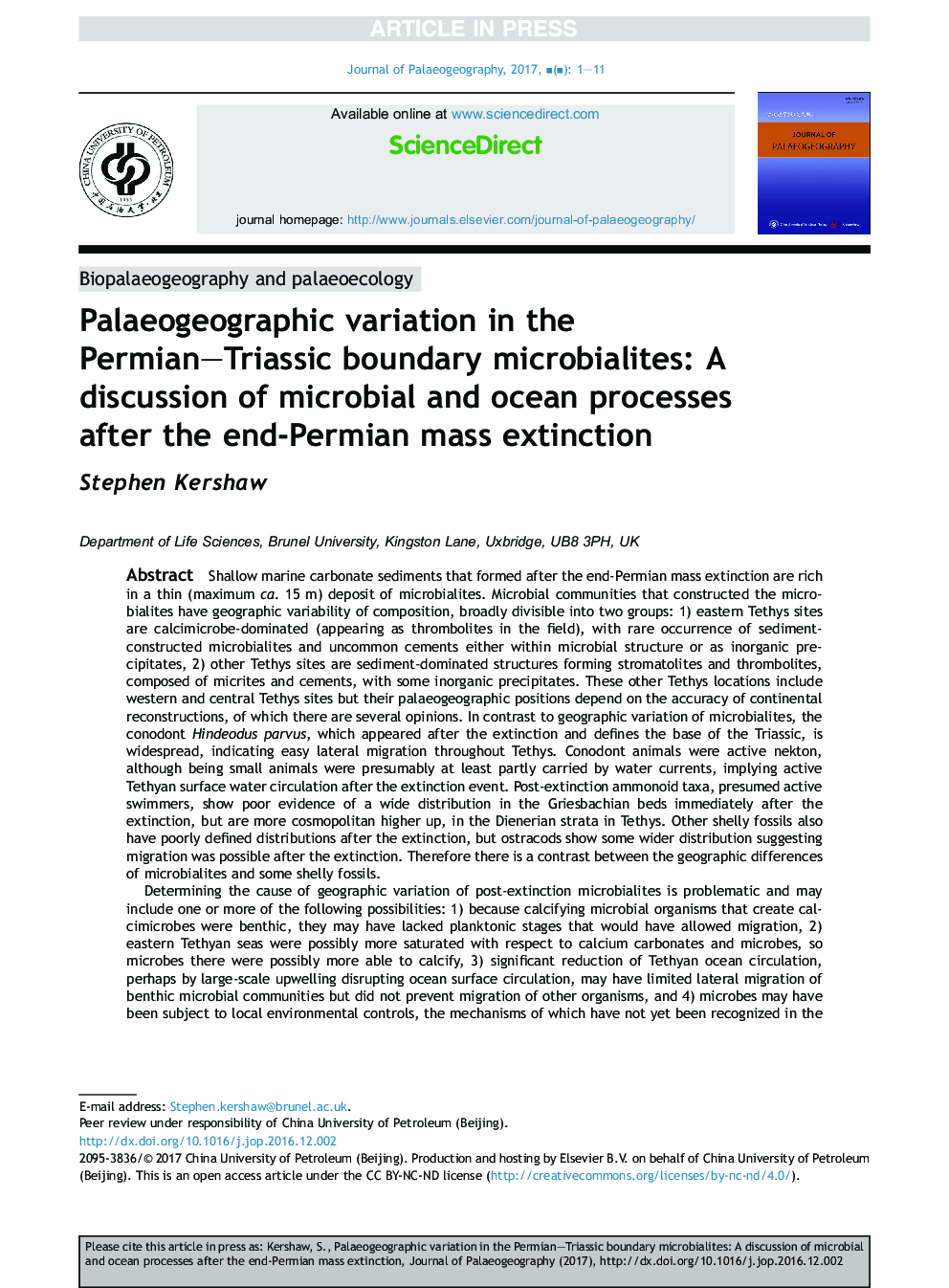| Article ID | Journal | Published Year | Pages | File Type |
|---|---|---|---|---|
| 8895341 | Journal of Palaeogeography | 2017 | 11 Pages |
Abstract
Determining the cause of geographic variation of post-extinction microbialites is problematic and may include one or more of the following possibilities: 1) because calcifying microbial organisms that create calcimicrobes were benthic, they may have lacked planktonic stages that would have allowed migration, 2) eastern Tethyan seas were possibly more saturated with respect to calcium carbonates and microbes, so microbes there were possibly more able to calcify, 3) significant reduction of Tethyan ocean circulation, perhaps by large-scale upwelling disrupting ocean surface circulation, may have limited lateral migration of benthic microbial communities but did not prevent migration of other organisms, and 4) microbes may have been subject to local environmental controls, the mechanisms of which have not yet been recognized in the facies. The difficulty of distinguishing between these possibilities (and maybe others not identified) demonstrates that there is a lot still to learn about the post-extinction microbialites and their controls.
Related Topics
Life Sciences
Agricultural and Biological Sciences
Soil Science
Authors
Stephen Kershaw,
